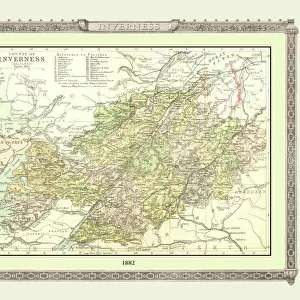Composite Plant illustration
![]()

Wall Art and Photo Gifts from Mary Evans Picture Library
Composite Plant illustration
An illustration of a composite plant - an imaginary plant created to demonstrate various plant parts - by PJF Turpin in Oeuvres d Histoire Naturelle de Goethe, by CF Martin, 1837
Mary Evans Picture Library makes available wonderful images created for people to enjoy over the centuries
Media ID 8600747
© Mary Evans Picture Library 2015 - https://copyrighthub.org/s0/hub1/creation/maryevans/MaryEvansPictureID/10715702
Art And Illustration Asteraceae Asterales Asterid Botanical Illustration Compositae Eudicot Goethe Root Stem Turpin Angiospermae Dicot Dicotyledon Magnoliophyta
EDITORS COMMENTS
This botanical illustration, created by the skilled hand of PJF Turpin in 1837, showcases a composite plant, an imaginary construct designed to elucidate various plant parts and their functions. The intricate illustration is taken from Oeuvres d'Histoire Naturelle de Goethe, published by CF Martin. At the heart of this illustration lies a flowering plant from the Asteraceae, or Compositae, family, commonly known as the aster or sunflower family. The plant is depicted in all its complexity, from its robust stem that anchors it to the ground, to its extensive root system that sustains its growth. The stem, adorned with leaves, branches out to bear the inflorescence, a dense cluster of flowers. The composite flower, a type of flower unique to the Angiospermae, or flowering plants, is highlighted in this illustration. The flower head is composed of numerous small flowers, collectively known as florets, which are grouped into two types: the outer ray flowers and the inner disc flowers. The ray flowers are typically large and showy, while the disc flowers are smaller and clustered in the center. This composite plant is classified as an eudicot, a type of Angiosperm that possesses two embryonic seed leaves, or cotyledons. It belongs to the Magnoliophyta division, which includes all seed-bearing plants. The illustration also reveals the presence of an asterid, a type of flowering plant that is part of the larger clade of Asterales. This exquisite botanical illustration, a testament to the artistic and scientific prowess of the time, continues to captivate audiences with its intricate details and accurate representation of the composite plant. It remains an invaluable resource for botanical research and a stunning example of the art and illustration of the 19th century.
MADE IN AUSTRALIA
Safe Shipping with 30 Day Money Back Guarantee
FREE PERSONALISATION*
We are proud to offer a range of customisation features including Personalised Captions, Color Filters and Picture Zoom Tools
SECURE PAYMENTS
We happily accept a wide range of payment options so you can pay for the things you need in the way that is most convenient for you
* Options may vary by product and licensing agreement. Zoomed Pictures can be adjusted in the Cart.



